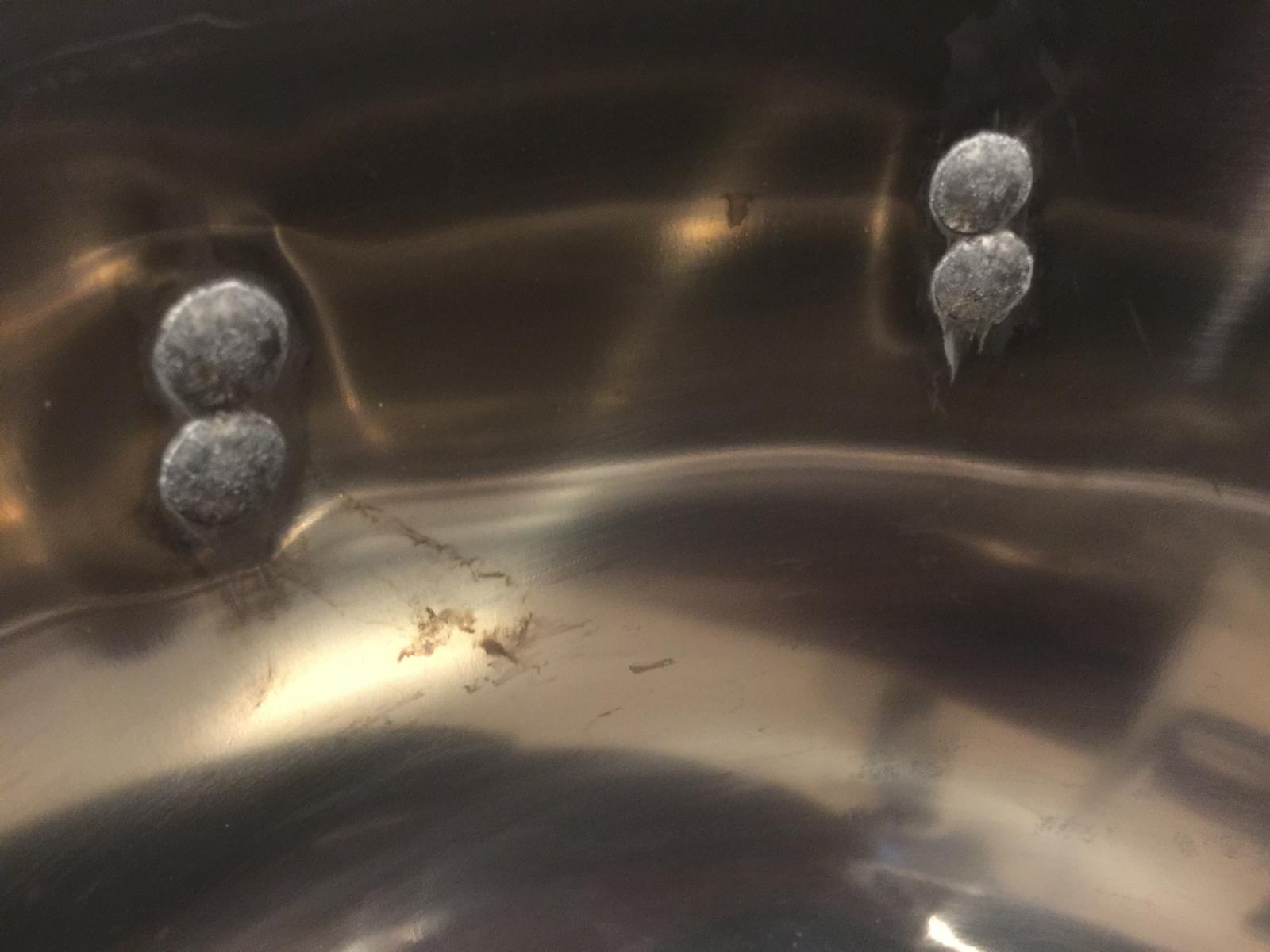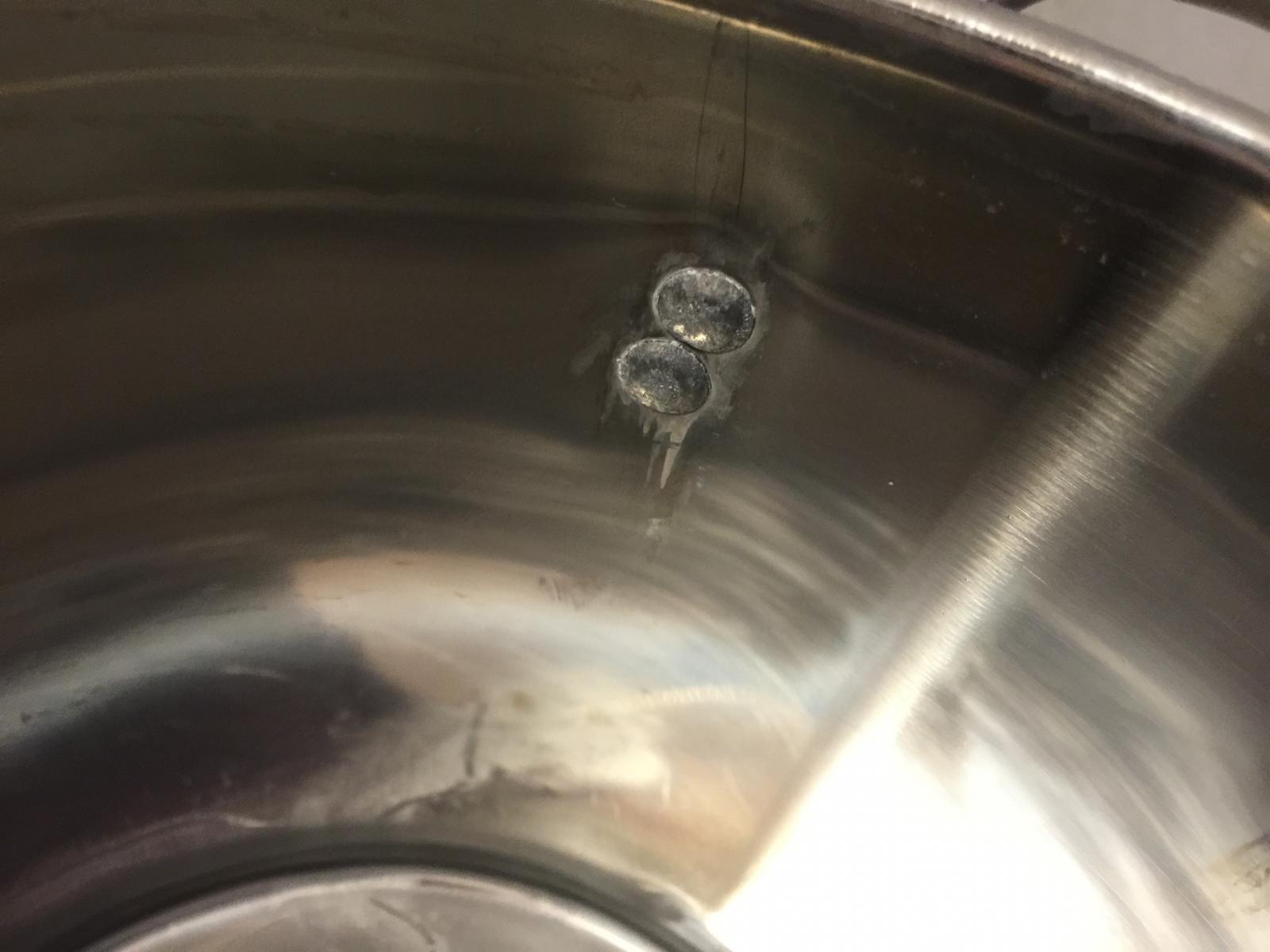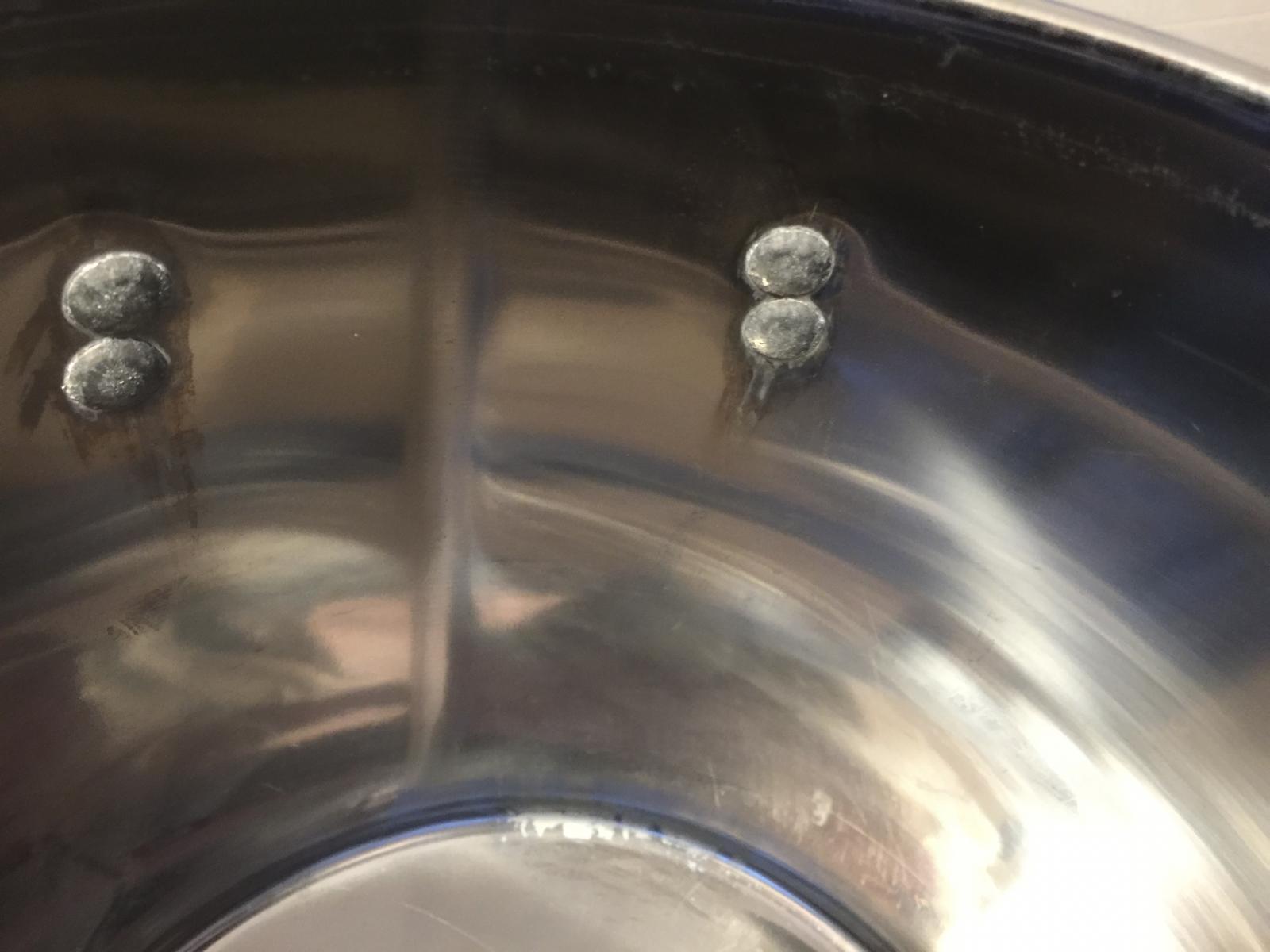- Joined
- Jan 17, 2014
- Messages
- 571
- Reaction score
- 175
* FIXED! Kind of. See post 24 here: https://www.homebrewtalk.com/showpost.php?p=7224225&postcount=24 *
* UPDATE - Manufacturer states that rivets are aluminum. The end. https://www.homebrewtalk.com/showpost.php?p=7250995&postcount=46 *
Finally traded out PBW for Oxiclean free in my setup. Post-brew, put 3 TBSP of that plus the last 1 TBSP of the remaining PBW I had in the kettle and let it soak with hot water, ~5 gallons. Over 24 hours passed before I dumped and soaked in clear water. I have since soaked it probably 5 more times in clear, hot water. Why? The bolts that secure the handles onto the pot feel rough/gritty. I don’t know if the Oxi/PBW soaking caused it or if it’s even harmful to the state of the kettle. However, with a little scrubbing from soft sponge and bare fingers, the grit has become progressively less with each soak. I can't get the bolts as smooth as the interior walls of the kettle. Not sure if it even matters. The result are some streak-shaped stains near the bolts. See photos.
Have I ruined my kettle? Thanks!



* UPDATE - Manufacturer states that rivets are aluminum. The end. https://www.homebrewtalk.com/showpost.php?p=7250995&postcount=46 *
Finally traded out PBW for Oxiclean free in my setup. Post-brew, put 3 TBSP of that plus the last 1 TBSP of the remaining PBW I had in the kettle and let it soak with hot water, ~5 gallons. Over 24 hours passed before I dumped and soaked in clear water. I have since soaked it probably 5 more times in clear, hot water. Why? The bolts that secure the handles onto the pot feel rough/gritty. I don’t know if the Oxi/PBW soaking caused it or if it’s even harmful to the state of the kettle. However, with a little scrubbing from soft sponge and bare fingers, the grit has become progressively less with each soak. I can't get the bolts as smooth as the interior walls of the kettle. Not sure if it even matters. The result are some streak-shaped stains near the bolts. See photos.
Have I ruined my kettle? Thanks!



Last edited:







![Craft A Brew - Safale S-04 Dry Yeast - Fermentis - English Ale Dry Yeast - For English and American Ales and Hard Apple Ciders - Ingredients for Home Brewing - Beer Making Supplies - [1 Pack]](https://m.media-amazon.com/images/I/41fVGNh6JfL._SL500_.jpg)


















































